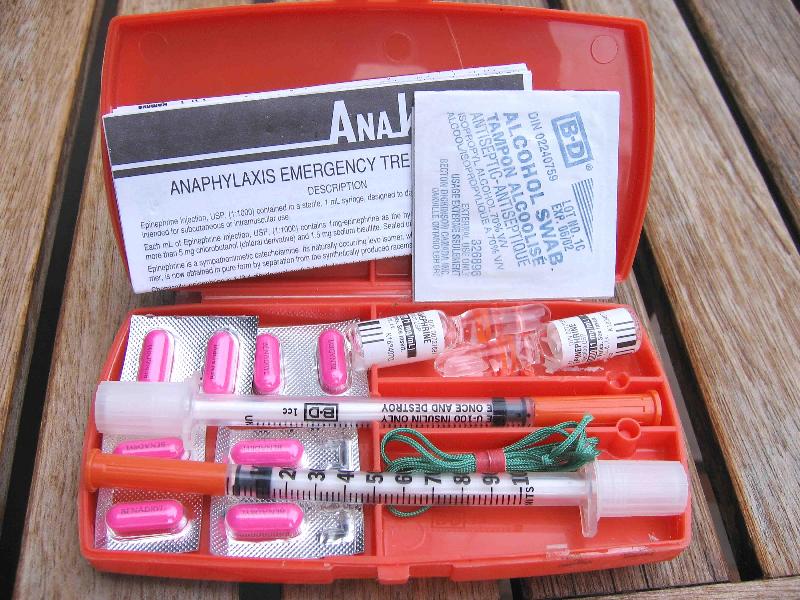bcla
On our rugged Eastern foothills.....
- Joined
- Nov 28, 2012
This looks very old, but it does have an auto-injector, with, presumably, the correct dosage, so no fumbling around with dosages or vials, thankfully.
There would be no need for a tourniquet as one would not be injecting it intravenously. (We cannot make that mistake people!) It is given intramuscularly as a direct injection.
I read a bunch of articles last night and I think I saw just one that mentioned the possibility of a vial, but even that one acknowledged that dosing errors, as well as fumbling in an emergency, could make that method a hazard. Most calls for reform from from professional groups call for an auto injector with a measured dose.
That was the only photo I could find that actually showed the complete contents, and it has that visible watermark. However, it's filled and shows all the parts. I also found a newer kit (with a folded instruction sheet), but where the user had already used the needle and had replaced several parts with with two syringes, two ampules of epinephrine, and what looks to be Benadryl (and the original contents were chlorpheniramine). Wonder how fast and accurate he would have reacted in case of emergency - especially breaking open the ampules without cutting a finger or spilling it.

http://forums.clubtread.com/11-hiking-backpacking/22708-epipens.html
I found an online version of the instructions.
http://www.kiessig.com/drugs/druginfo.aspx?id=1207
So the "tourniquet" was meant for something like a bee sting or accidental injection (I guess it could happen) of some allergen - to slow down the flow of the blood if the exposure was on an arm or leg. The instructions were to apply it after the injection.
